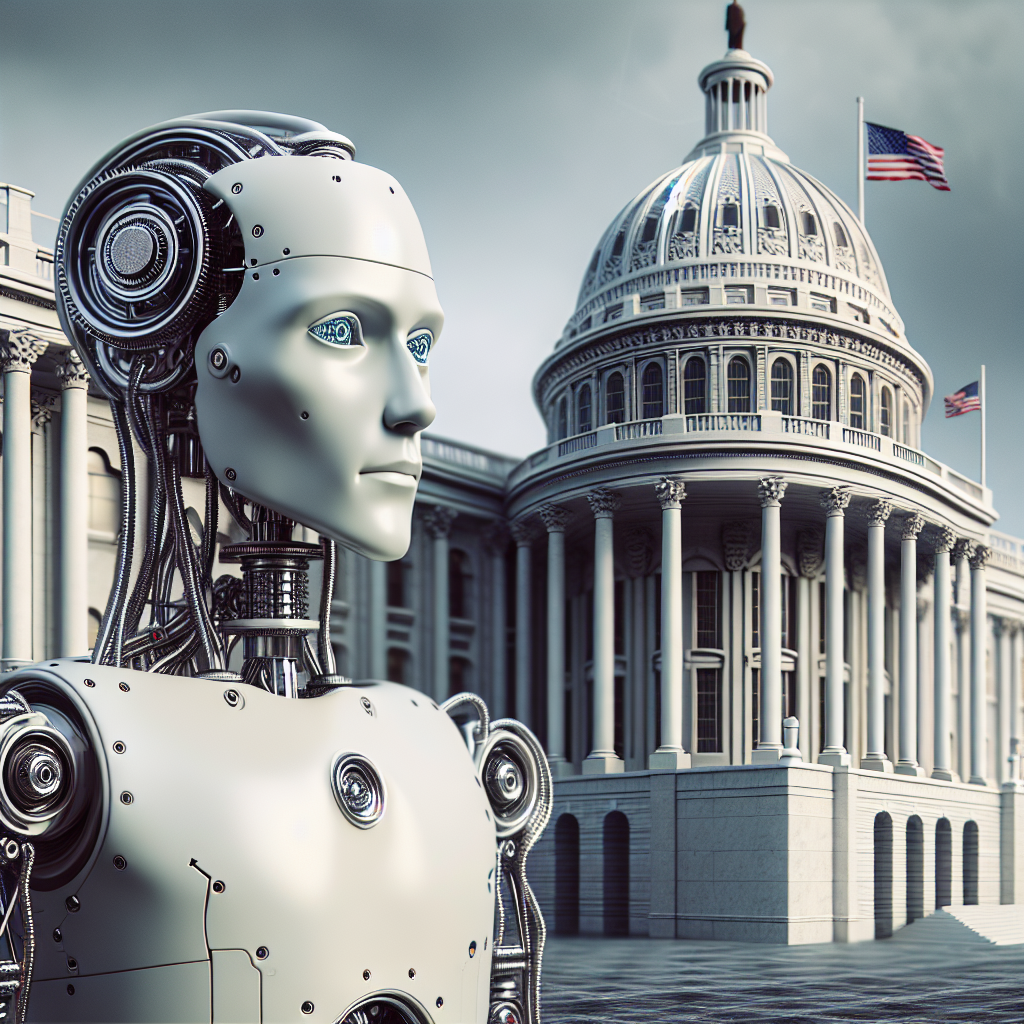As artificial intelligence (AI) continues to advance at a rapid pace, governments around the world are increasingly turning to AI technology to improve efficiency, effectiveness, and service delivery. While AI has the potential to revolutionize the way governments operate, there are also significant risks and challenges associated with its implementation. In this article, we will explore the potential threats and challenges of AI in government and discuss how these risks can be mitigated.
Potential Threats of AI in Government
1. Privacy and Security Concerns: One of the biggest risks of AI in government is the potential for privacy and security breaches. AI systems collect and analyze vast amounts of data, including sensitive personal information, which could be vulnerable to hacking or misuse. Governments must ensure that strong security measures are in place to protect this data and prevent unauthorized access.
2. Bias and Discrimination: AI algorithms are only as unbiased as the data they are trained on. If the data used to train AI systems is biased or incomplete, it can lead to discriminatory outcomes. For example, AI systems used in law enforcement may disproportionately target minority communities if they are trained on biased crime data. Governments must be vigilant in monitoring and addressing bias in AI systems to ensure fair and equitable outcomes.
3. Job Displacement: As AI technology automates routine tasks and processes, there is a risk of job displacement for government workers. While AI can improve efficiency and productivity, it can also lead to job losses in certain sectors. Governments must consider the impact of AI on the workforce and develop strategies to retrain and upskill workers in at-risk industries.
4. Lack of Transparency: AI algorithms can be complex and opaque, making it difficult to understand how decisions are being made. This lack of transparency can erode public trust in government AI systems and raise concerns about accountability. Governments must ensure that AI systems are transparent and explainable, with clear processes for auditing and oversight.
5. Regulatory Challenges: The rapid pace of AI development presents challenges for governments in terms of regulation and oversight. Existing regulatory frameworks may not be equipped to address the complex ethical, legal, and social issues raised by AI technology. Governments must work proactively to develop new regulations and guidelines that balance innovation with accountability.
Challenges of AI in Government
1. Implementation and Integration: One of the biggest challenges of AI in government is the successful implementation and integration of AI systems into existing processes and workflows. Governments may face resistance from employees who are unfamiliar with AI technology or reluctant to change established practices. Effective change management strategies are essential to overcoming these challenges and ensuring successful adoption of AI.
2. Data Quality and Availability: AI systems rely on high-quality data to function effectively. Governments may struggle to access the data they need for AI projects, whether due to data silos, privacy concerns, or data quality issues. Governments must invest in data infrastructure and governance to ensure that the data used in AI systems is accurate, reliable, and representative.
3. Ethical Considerations: AI technology raises a host of ethical considerations for governments, including questions of accountability, transparency, and fairness. Governments must grapple with complex ethical dilemmas, such as how to balance the benefits of AI with the potential risks and unintended consequences. Developing ethical guidelines and frameworks for AI in government is essential to navigating these challenges.
4. Capacity and Skills Gap: Implementing AI in government requires a skilled workforce with expertise in data science, machine learning, and AI technology. Governments may struggle to attract and retain top talent in these fields, leading to a capacity and skills gap. Investing in training and development programs for government employees is crucial to building the capacity needed to harness the full potential of AI.
5. Public Perception and Trust: Public perception and trust are critical factors in the successful adoption of AI in government. If citizens perceive AI systems as intrusive, biased, or unaccountable, they may resist or reject government AI initiatives. Governments must engage with the public, communicate transparently about AI projects, and involve stakeholders in decision-making processes to build trust and ensure public acceptance.
FAQs
Q: How can governments ensure that AI systems are unbiased and fair?
A: Governments can mitigate bias in AI systems by ensuring diverse and representative data sets, conducting regular audits and evaluations of AI algorithms, and implementing transparency and accountability measures.
Q: What steps can governments take to protect data privacy and security in AI systems?
A: Governments can protect data privacy and security in AI systems by implementing strong encryption and access controls, conducting regular security assessments and audits, and complying with relevant data protection laws and regulations.
Q: How can governments address the job displacement caused by AI technology?
A: Governments can address job displacement by investing in workforce development programs, retraining and upskilling workers in at-risk industries, and promoting the creation of new jobs in emerging AI-related fields.
Q: What role should governments play in regulating AI technology?
A: Governments should play a proactive role in regulating AI technology to ensure ethical and responsible use. This may include developing guidelines and standards for AI deployment, establishing oversight mechanisms, and engaging with industry stakeholders to address emerging challenges.
In conclusion, while AI has the potential to transform government operations and improve service delivery, there are significant risks and challenges that must be addressed. By implementing robust security measures, addressing bias and discrimination, developing ethical guidelines, and investing in capacity building, governments can harness the power of AI technology while mitigating its potential threats. Effective governance, transparency, and public engagement are essential to ensuring that AI in government is used responsibly and ethically for the benefit of all citizens.

